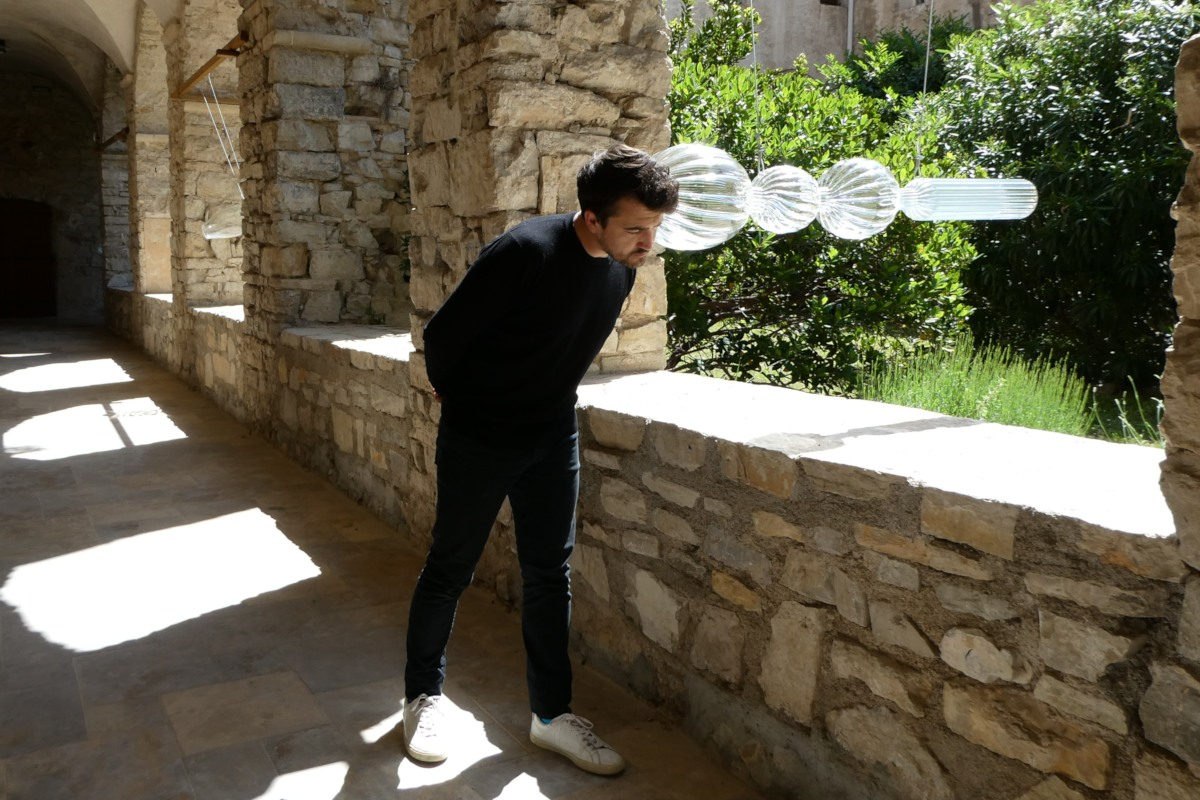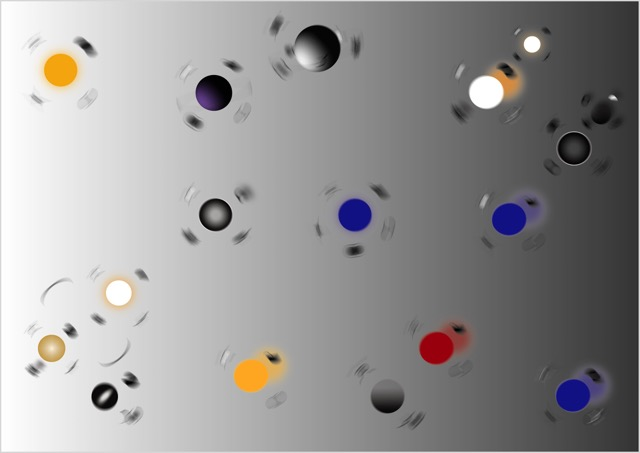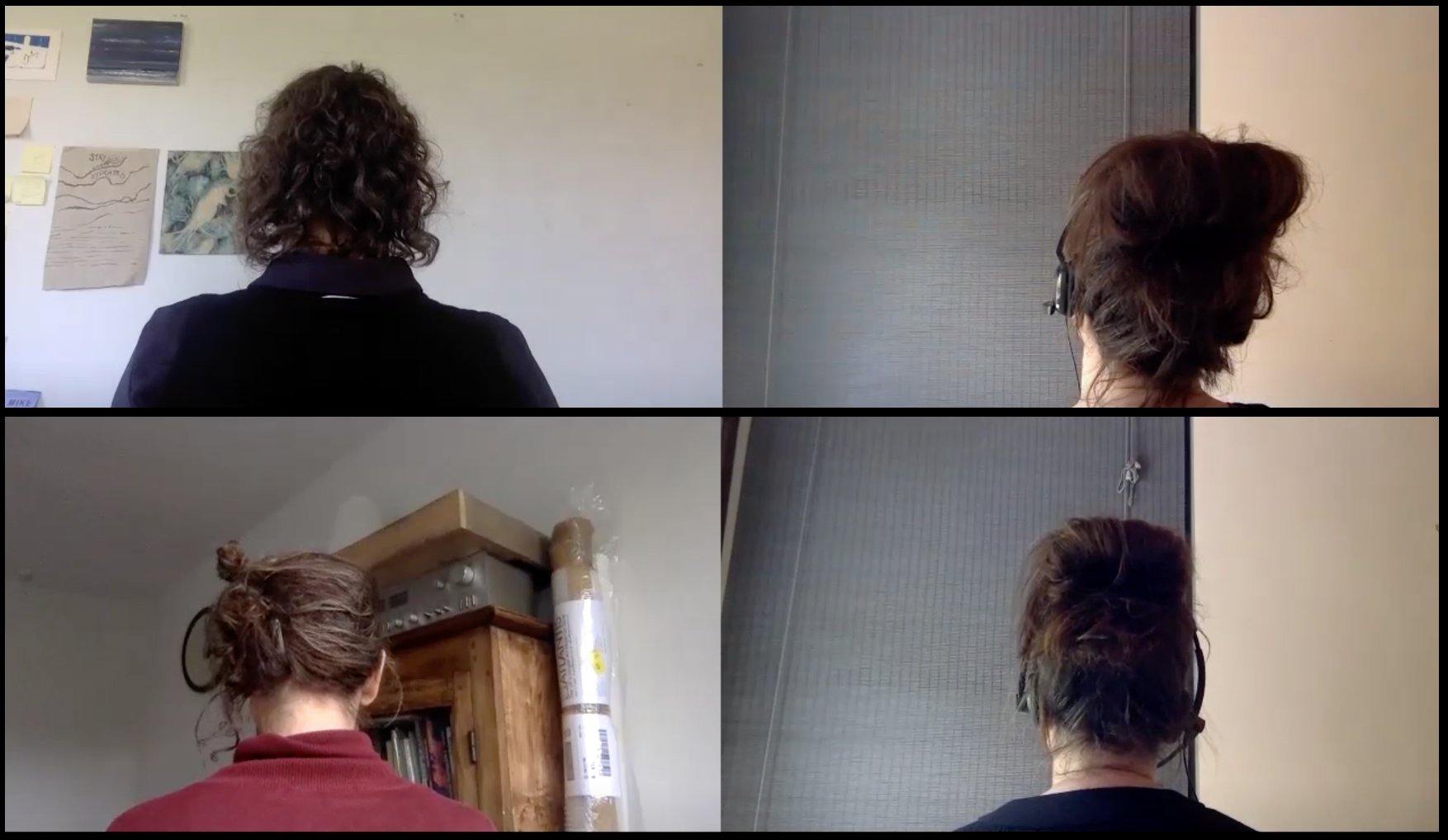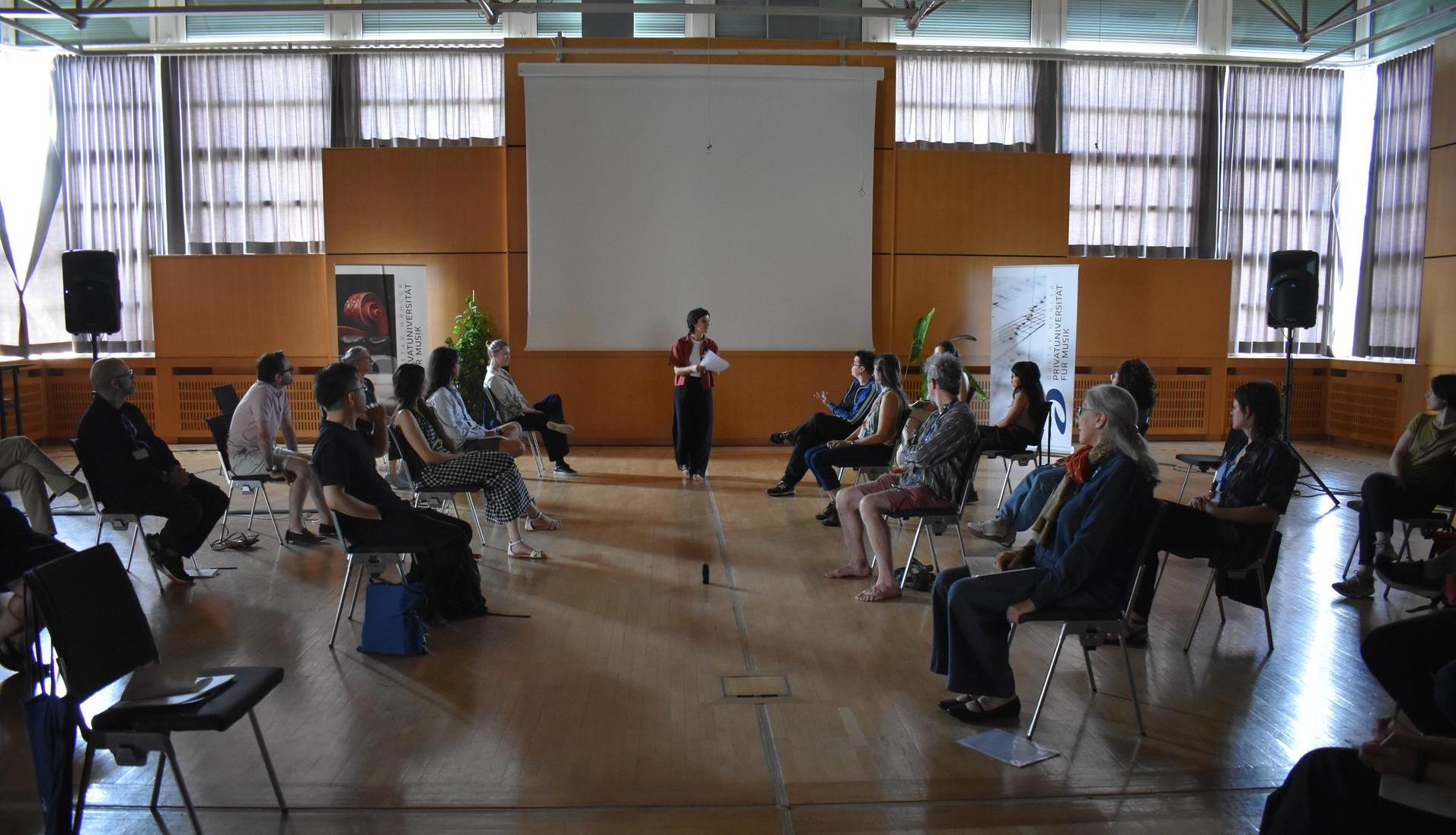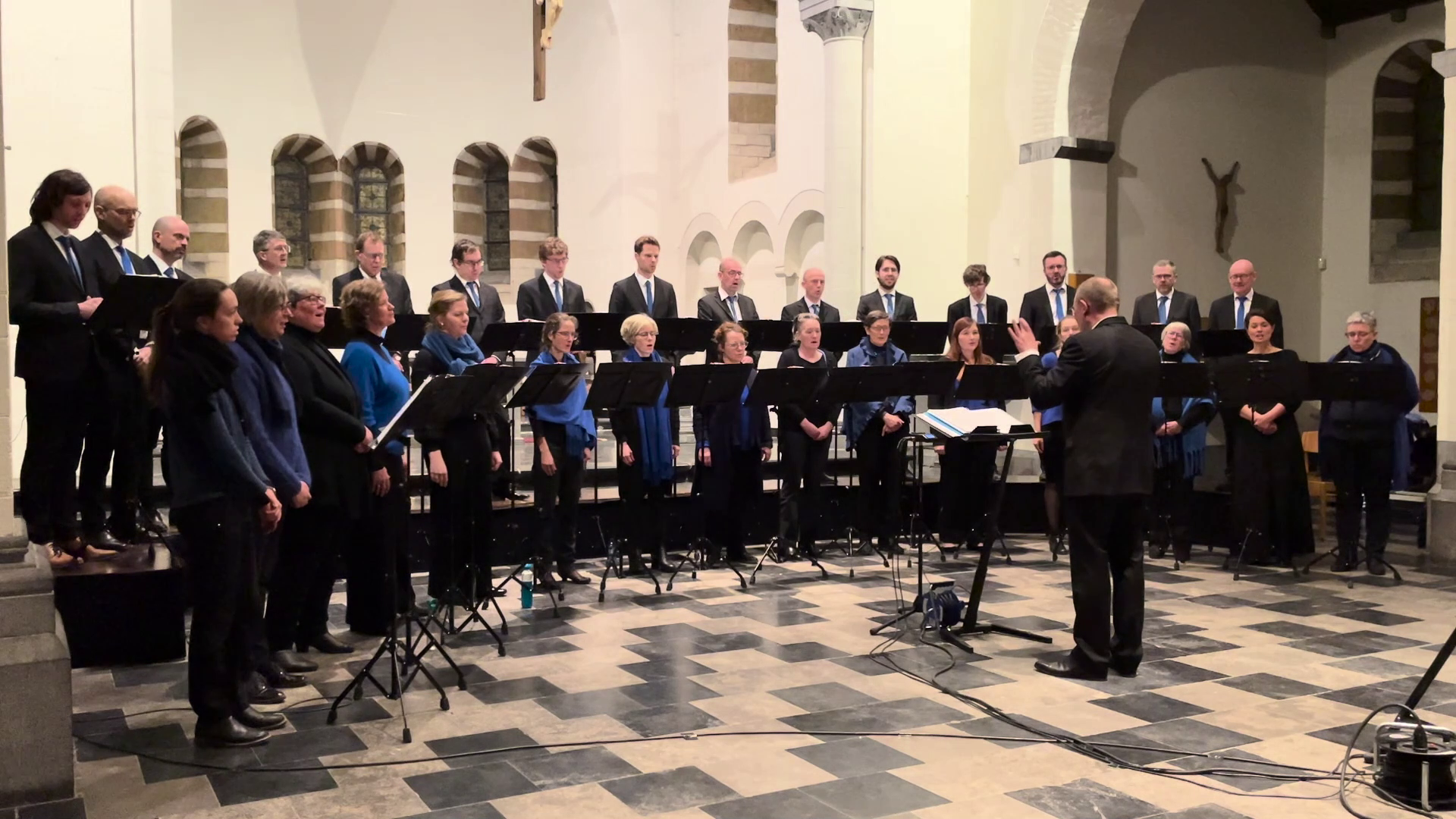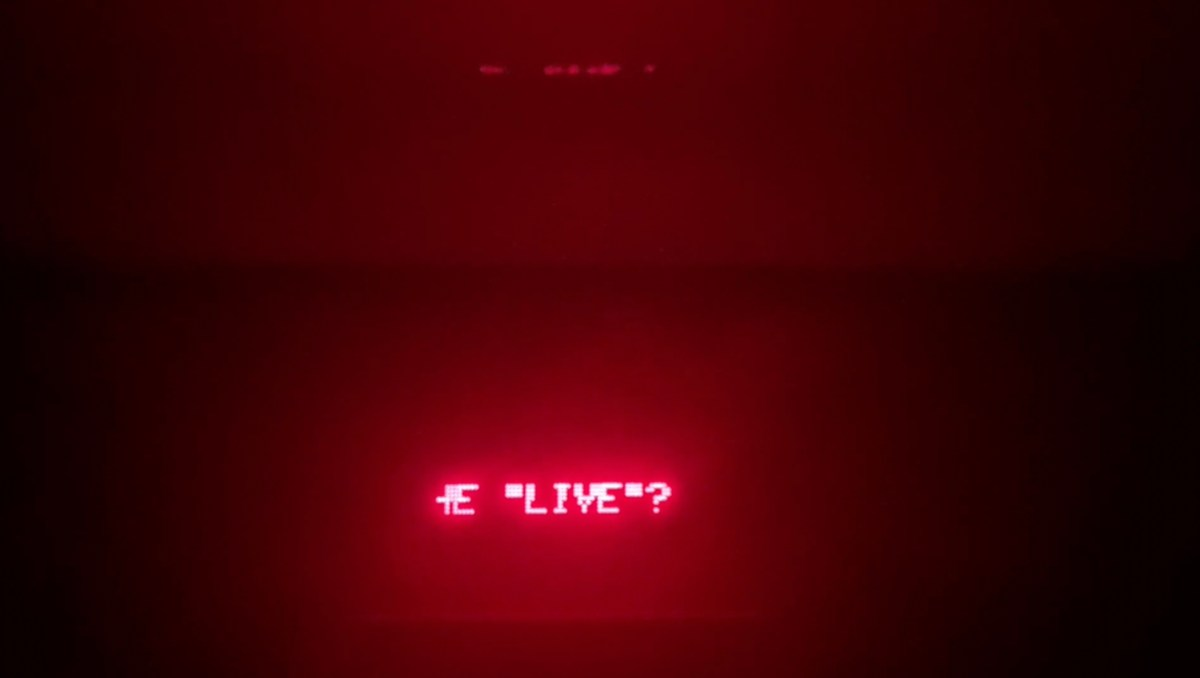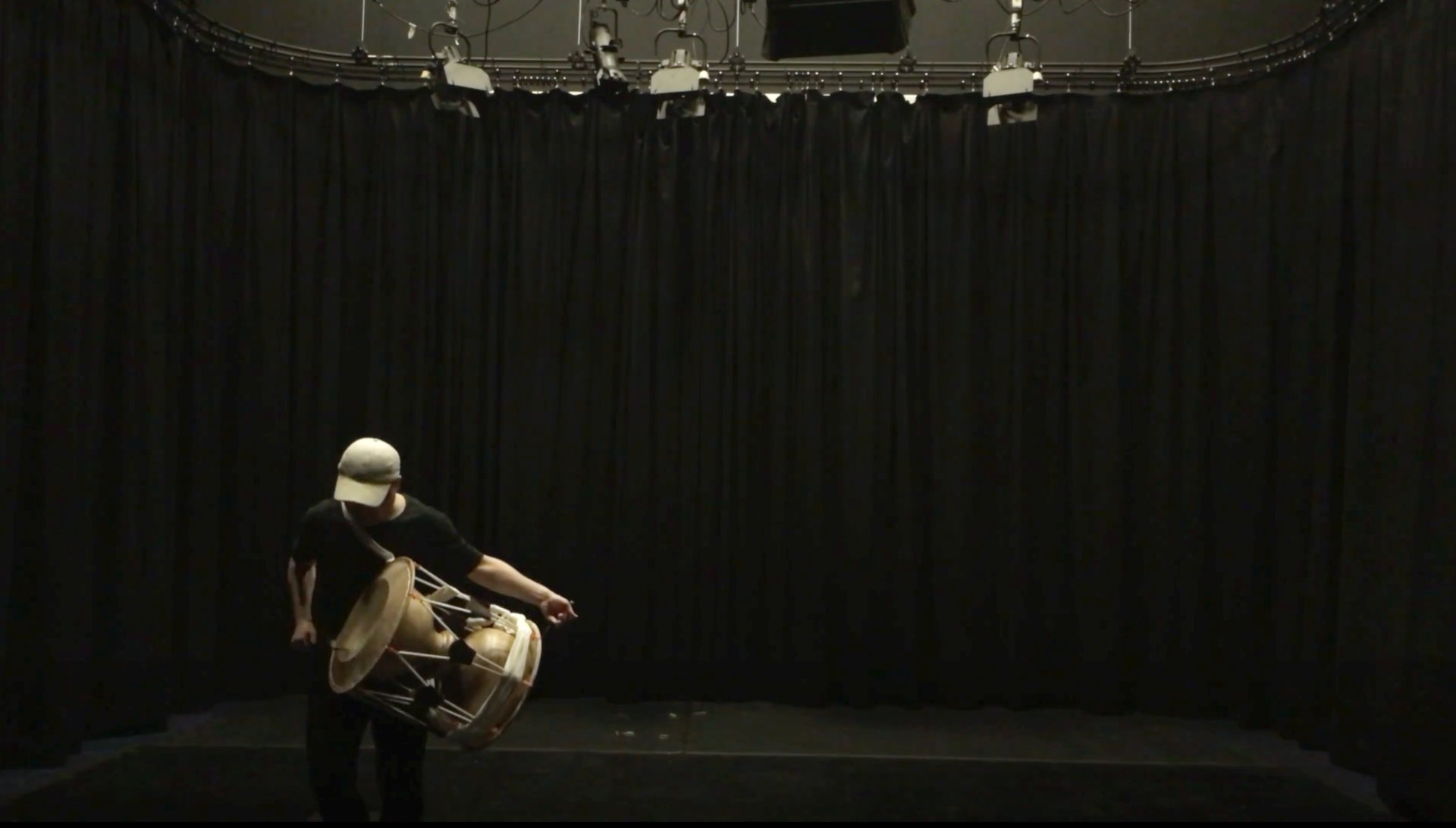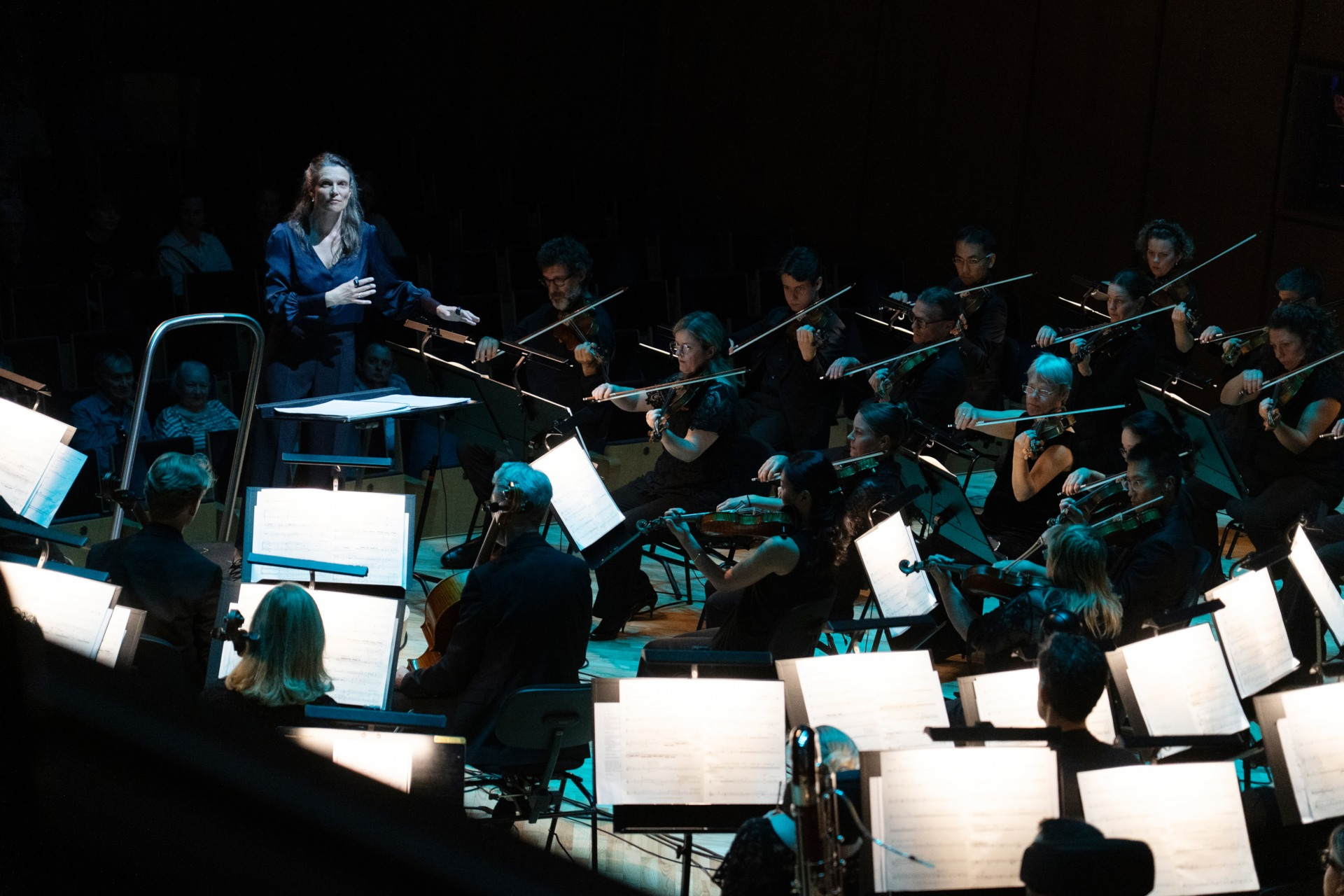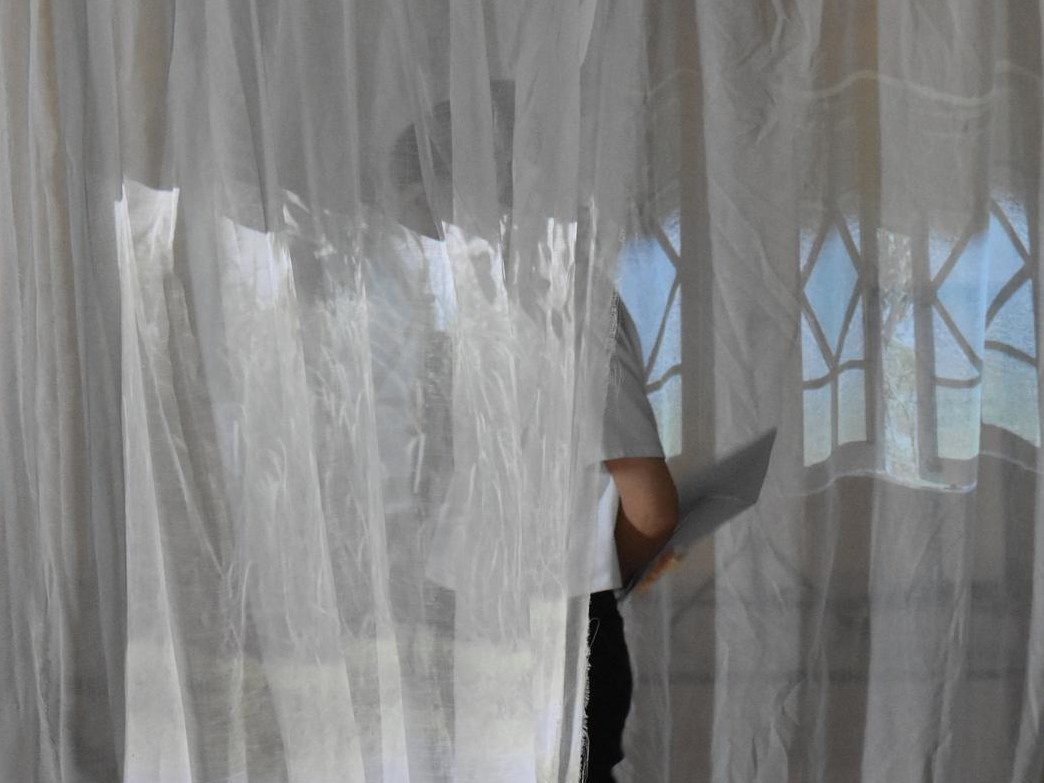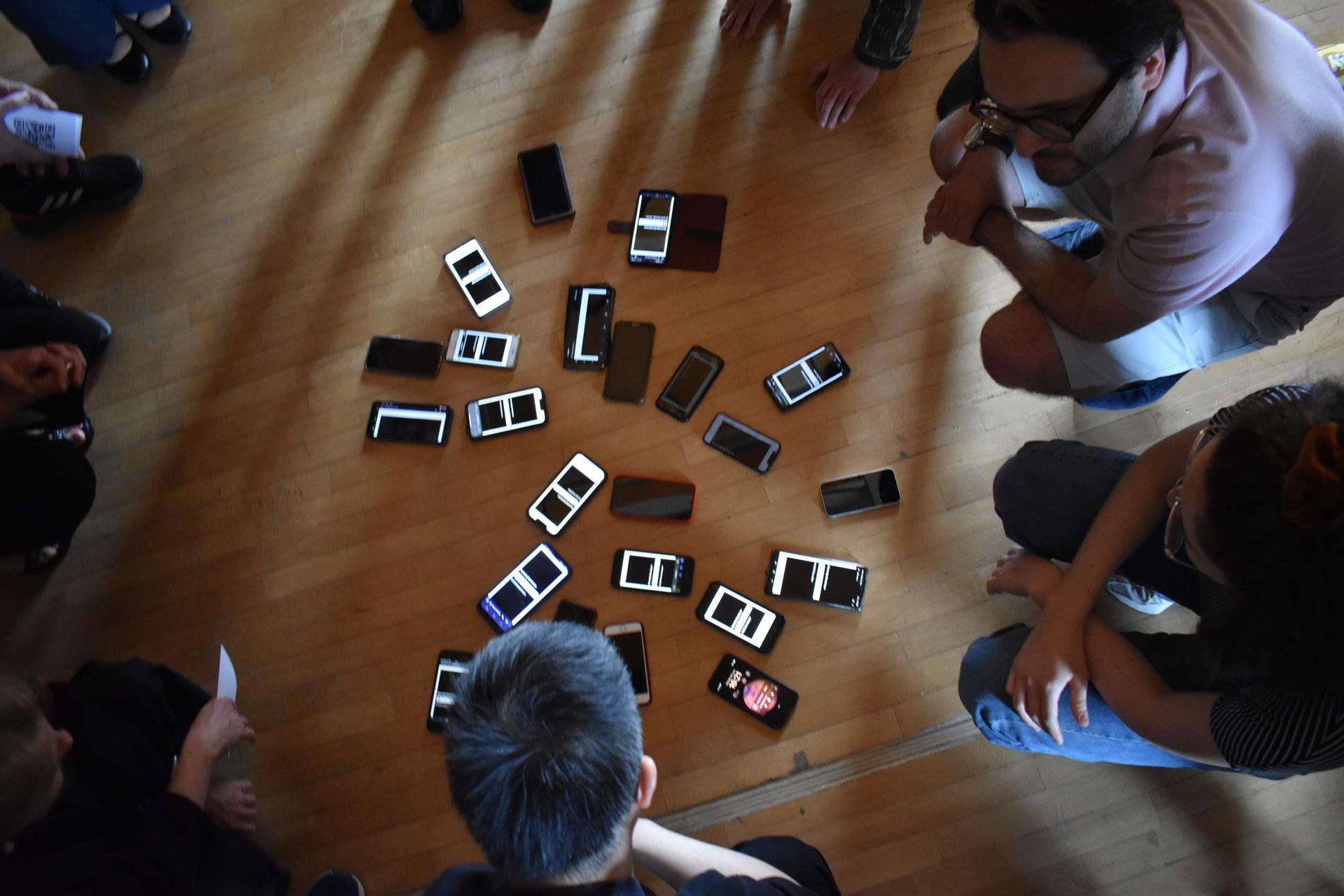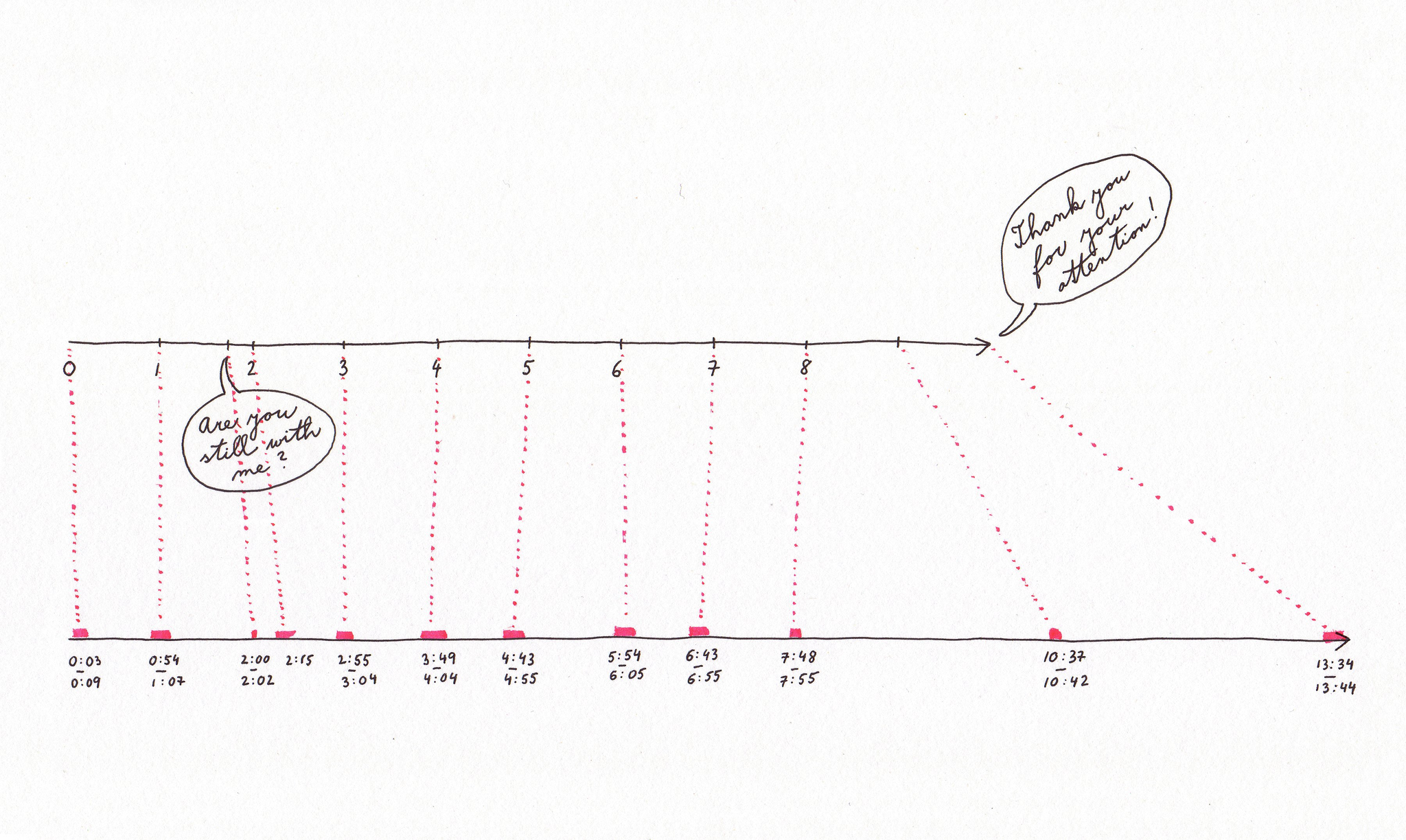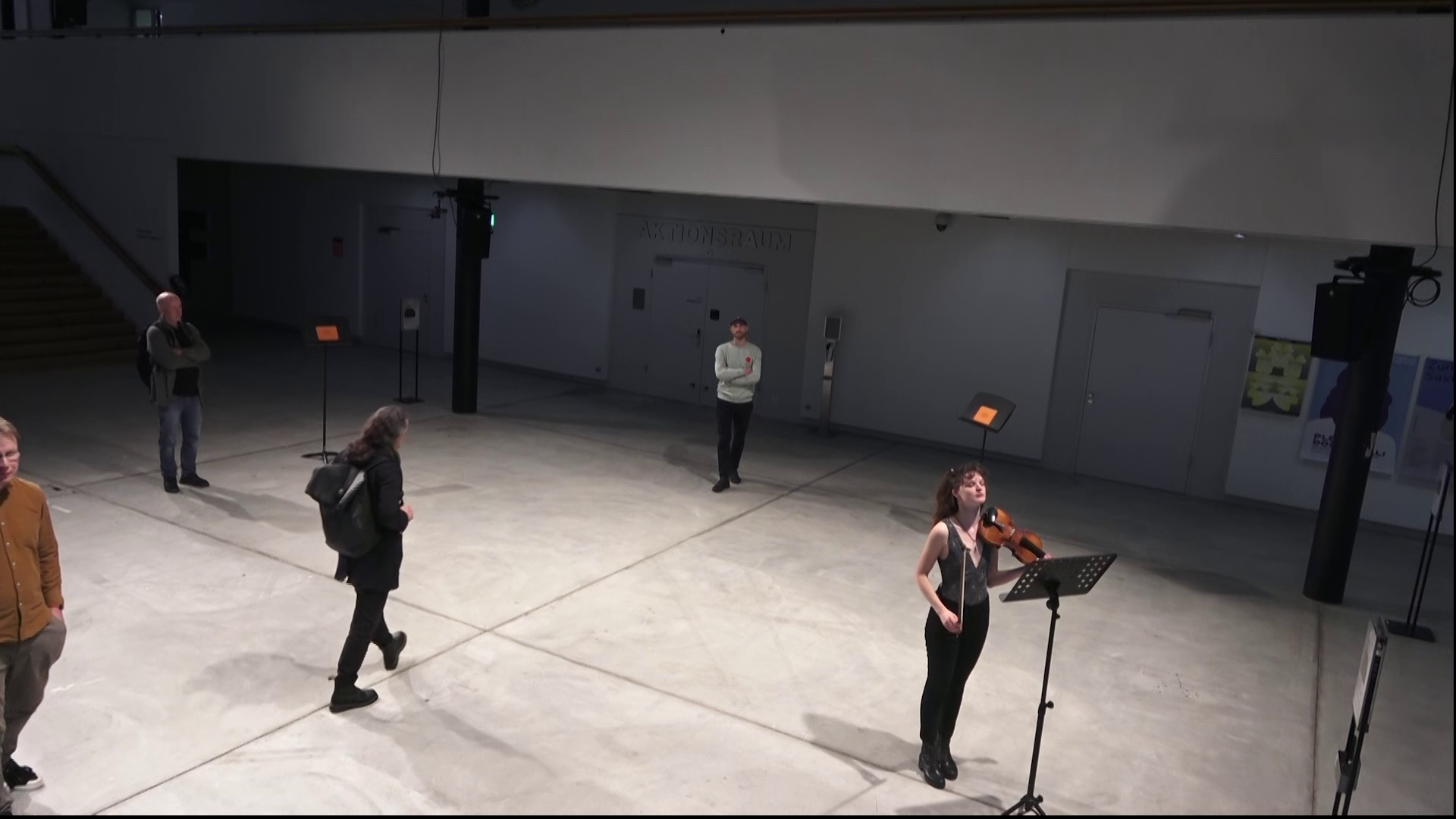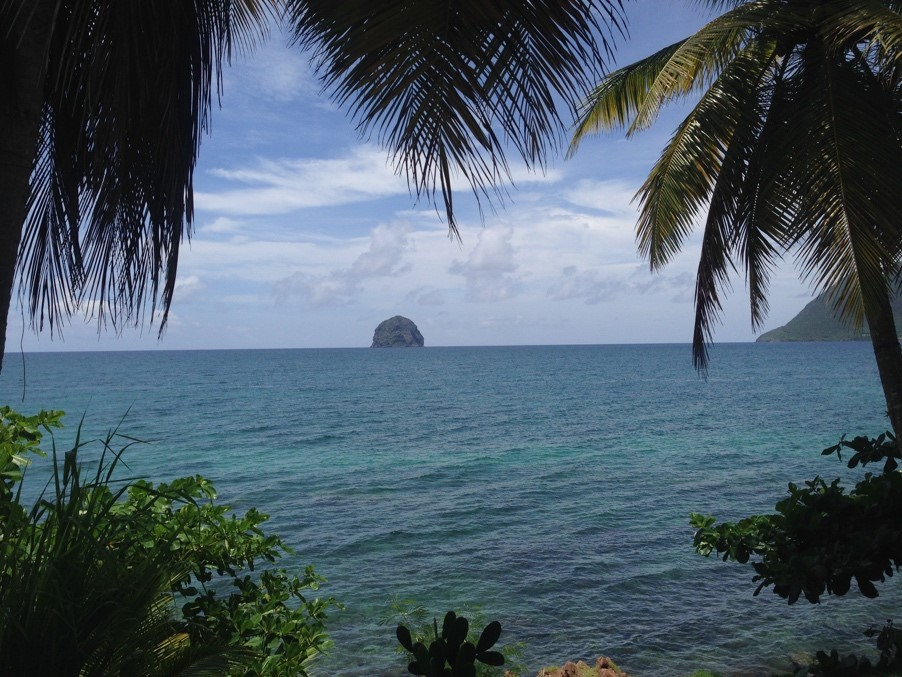Proceedings of the 1st symposium Forum Artistic Research: listen for beginnings
The first interdisciplinary symposium Forum Artistic Research: listen for beginnings took place 27–29 June 2024 at the Gustav Mahler Private University of Music (GMPU) in Klagenfurt, Austria, and brought together artists-researchers from various backgrounds and practices. It was organised and hosted by the GMPU with the artistic research project Simultaneous Arrivals (FWF AR 714-G).
Editorial
Moments of wonder: looking at the introductory pages of the booklet produced for the three day symposium held last year in summer, and trying to locate the entry point for this editorial, those three words caught my attention. Those moments are perhaps the greatest reward for conducting research and creating art. And while you can be on your own, filled with wonderment, only in shared and collaborative situations, encounters of wonder unfold their true consequences.
In retrospect, moments of wonder were the intrinsic motivation to create the symposium, and the given title can be read as their generator: Listen for beginnings… The imperative, to listen, was understood both at face value—directly connecting to practices in music and sound—and as the general posture of being attentive and sensitive, avoiding the filter of already established conceptions. How do we notice something new or different is about to happen?
Big Resonators and Earpieces
With the big resonators and earpieces (écoutoirs) that were created in 2003 as part of the exhibition “Esprits des lieux” for the Chapelle de l’Observance in Draguignan, I try to look into a hitherto invisible landscape and to deal with new perceptions and gestures. The reality of this landscape eludes frontal observation and emerges through a kind of sensory, sensual immersion. My personal idea of empathy and exploration comes to the fore: not to be inspired by the place or nature, but to lose ourselves in them in order to find out what still needs to be searched for, explored and built. In my lecture and the subsequent sound presentation, I will focus in particular on the question of togetherness and mutual awareness of space and research, space and art.
Keywords: artistic research, soundscape, Soundart, Sensory design, Art, architectural research, ambiance, ecology
Bodies in Resonating Action: Strategies of Initiating Collaborative Creative Work
Music-making often times based on a system of objectified sound representations delivered into a fixed, precise and descriptive notation, renders the score independent of the composer, while at the same time creating a gap of communication between composer and performer. The research project “Bodies in resonating action” re-examines two fundamental relations of music-making, namely the dynamics between composer and performer, and the relationship of the performer with their own body during performing by extending its materiality towards the body of their instrument. In this context the sense of togetherness is being reinforced throughout the whole creative process of making music. By initiating constant experimentation through improvisation with the performer’s body as a focal point of observation, both composer and instrumentalist—even though from a different perspective—develop a mutual dialogue and tune into physical and mental processes as they manifest during practice. Listening carefully to the performing body, how it behaves and reacts to specific tasks, how it breathes, moves, thinks, feels, while doing so in the unique way of a specific individual, creates a deeper understanding of what musicking actually involves, and in this way gives the composer important insights. The obtained knowledge through that process is individualised depending on the specific research partner, it can however be applied, or even enriched, when put into practice with other musicians. Two strategies are followed in order to achieve that; firstly, devising a methodical process of working with a musician so as to observe and research their own uniqueness, and developing tools that facilitate the (re-)initiation of the creative process. As a composer who leads this process, one also has to develop strong reflexes to observe and react to whatever may spontaneously occur. Secondly, constructing notations that encapsulate concepts or even processes of research, and that can reflect thought, while having the flexibility to expand and include further knowledge gained. The result of this kind of work is a musical idea which is constantly in flux, is being re-shaped, deconstructed and re-constructed. The idea is also performed on each stage differently, incorporating more knowledge along the way, however not striving for a final absolute artwork, but rather attempting to capture and perform the process.
Keywords: embodied musical performance, collaborative creative practice, Body of the Performer, notation, Singing practice, composition as research
Passive Listening: Exploring Interpassivity in Ambient Music
The landscape of ambient music presents unique challenges for critique and classification due to its wide range of subgenres, functions and goals. Often defined by its atmospheric and immersive qualities, ambient music is traditionally seen as providing a backdrop for relaxation or as a means to block out the harsh reality of the outside world. This dominant theory, while valuable in certain contexts, tends to oversimplify the multifaceted nature of ambient music and ignores the potential for more nuanced listening experiences. The proposed alternative theory of interpassivity challenges existing understandings of ambient music production and consumption modes.
Drawing on psychoanalytic theory, aesthetics and media studies, interpassivity suggests that, under certain circumstances, audiences can choose to delegate the experience of enjoyment to the music itself. This delegation involves a passive surrender of agency that allows the music to shape the listener’s experience without direct, conscious participation.
To illustrate this, we contrast ambient music with more conventional music styles. Exploring both compositional and audience perspectives, we examine how ambient music’s intentional lack of participation distinguishes it from active and attentive music listening practices. By understanding the interplay between the compositional choices of musicians and the passive role assumed by the audience, we may gain a deeper understanding of the various expressions of the genre. We examine the modes of listening commonly associated with ambient music as a means for interrogating the interpassive nature of the genre.
Scholars argue that ambience in the arts is an active and complex force that shapes our perception and understanding of sound and that it should not be dismissed as passive or inconsequential, but rather be seen as a dynamic element that demands critical engagement. In contrast to an emphasis on active engagement, our perspective accommodates instances where listeners engage in a more passive experience. We advocate for an expanded view of the listener’s role in ambient music, recognising the potential for aesthetic experiences that may emerge from the intentional relinquishment of involvement. This nuanced perspective aligns with the complexities inherent in the genre and enriches the discourse surrounding ambient music, offering a broader framework for its classification and appreciation.
Keywords: Interpassivity; Ambient
Soft letting of language: Listening for emergent wor(l)ds
My presentation for Listen for Beginnings drew on a number of recent collaborations to explore how the ethico-aesthetic practice of listening (and being listened to) has increasingly become a vital thread within my enquiry. The performativity of my presentation involved weaving between different research artefacts and materials generated in and through artistic collaboration (including video and transcript extracts), alongside "thinking with" a wider critical-contextual milieu (specifically the writing of thinkers such as Gemma Corradi Fiumara and Lispeth Lipari) to consider the relational and ethical ramifications of a listening attitude. I explored how forms of languaging developed through listening might in turn call for different kinds of reception (alternative ways of listening and reading), alongside proposing how a ‘listening stance’ might inform an approach to collaboration — collaboration conceived as a mode of in-touch-ness that also allows for adjacency and alongside-ness, for indirectness and obliqueness, for the reciprocity of listening and being listened to. Within this published context, I want to allow a ‘breathing space’ (perhaps even a ‘listening space’) for selected fragments of an emergent vocabulary of/through listening generated from within a process of collaborative research. My paper comprises extracts of conversational transcript from three different collaborative projects where an immanent and reflexive language for attesting to the qualities and conditions of listening emerges in and through a language-based practice that is itself imbued with a listening attitude — one that involves listening to oneself, listening to others, listening for emergent wor(l)ds. The textual extracts have been generated largely through a practice of conversation and/or the experimental reading of conversational transcripts within the following projects: I – “Dorsal Practices” is an artistic research collaboration with Katrina Brown for exploring how a back-oriented awareness and attitude might shape and inform our embodied, affective and relational experience of being-in-the-world; II — “thinking aesthetic thinking through aesthetic research practices” is an artistic research project involving Alex Arteaga, Emma Cocker, Nicole Wendel (with Sabine Zahn in the first phase) that focuses on ways in which aesthetic research practices enable and realise a specific form of thinking: aesthetic thinking; III — “The Appearance of the More” is an artistic research collaboration with Nicole Wendel for bringing-into-relation the unfolding, embodied processes of drawing and languaging as resonating fields of perception and cooperation.
Keywords: listening, language-based artistic research, collaboration, conversation, dorsal practices
A Time of Unfulfilled Expectations
My doctoral research project explores the use of language and the production of meaning in singing, more specifically in collective vocal improvisation. When we sing together improvising, how do we use language? And how can a different use of language in a community of singers innovate our musical practice? In «Re-voicing the Text. A Collective Practice of Vocal Improvisation», the line between a research presentation and a collective performance is blurred, as well as the boundary between doing research and sharing research. During this session, participants sang together and reflected out loud with me, and I with them, on our native languages and the way a certain use of language might induce us to conceive time in music differently. Our exploration began with Mentre (“While”), a short text by Giorgio Agamben, in which the philosopher proposes using language—and adverbs in particular—as a way of rethinking time.
Keywords: voice, language, voice and language, vocal improvisation, Collective improvisation, time, grammar, singing, Speaking, song and speech
tír-éist: collaborative practice with more-than-human colleagues
This paper is an exploration of collaborative artistic practice. Drawing from contemporary philosophy and ethics, it uses practical experience from three collaborative research projects to show how different approaches can be applied in artistic research. The paper draws from three collaborative research projects, each with a slightly different approach. The projects took place between 2018 and 2023, and include collaboration between artists, collaboration with more-than-human colleagues, and research collaboration.
Keywords: art, artistic research, collaboration, more-than-human, collaborative processes, collective, ethics of care, ethics
The Enchanted Forest: exploring the development of relations in artistic collaborations that combine individual and collective creative practices
In this contribution, I reflect on the activity of listening as a prerequisite for the development of relations in creative processes in a composition collaboration. The creation process of my piece The Enchanted Forest (2023) with choir Musa Horti (cond. Peter Dejans) serves as example to shed light on some of the manifold aspects of the development of relations when combining individual and collective work. It is part of my artistic doctoral project, where I, based on an understanding of composing and improvising as conglomerates of entangled creative activities, investigate what activities a musical composition is part of, formed and transformed by and how the participants of creative situations are related through their interacting. Guided by asking how to listen to myself while listening to other(s), I describe my understanding of creative processes as contact processes and how listening engenders a transactional relation to the situation (Schön 2017, 150), where my body interacts with the material and nonmaterial participants, thus creating the evolving sound and relations between all participants. A concept of listening inspired by listening’s etymological proximity to obeying, gives a key to grasping the tactile dimension of human interaction with sound and links it to Rosa's sociological concept of resonance (Rosa 2018). Through reflecting on The Enchanted Forest’s different stages of collaboration and my individual work with text and sound, I describe listening as something active that involves movement and transformation. Drawing on Rosa’s concept and the tactile dimension of improvising (Meelberg 2022), I trace the diversity of beginnings of developing relations between me, the choir and the musical material. Understanding thus listening to oneself as a premise for listening to other(s), I show its necessity for the development of tacit knowledge and the awareness of different forms of togetherness.
Keywords: composition, improvisation, listening, tacit knowledge, choral music, resonance
Beyond the unnecessary self
In my 2013 paper The (un)necessary self, I explored the idea of the giving up of the self as an important step towards the dismantling of the romantic idea of creation, and approach an understanding of creativity that is more closely aligned with the other. The other should be understood as anything that affects the artistic practice: a co-creator, a listener, a participant or a remote collaborator as well as any non-human actor. The point was to move the focus from the creator to what is created and to understand the roles of the various agents involved. This idea is further developed in this paper through several new trajectories.
In music, hyper-capitalism of the twenty-first century is eager to commodify the artistic output, the artist, as well as the listeners. This is not only a problem for the freedom of art (a concept equally complex), it also makes the role of the self difficult to understand. But in the radicalization of the role of the creator, both a new work concept and a review of the self become necessary, even beyond the notion of giving up of the self. The ethics in artistic practices, that is, the moral values that are expressed through artistic practices in music, specifically improvisation, may complement traditional views on ethics and is an important aspect when discussing the roles of the self. The notion of the Care of the Self, as discussed in Volume Three of Michel Foucault’s History of Sexuality, is used as a method to approach this complex area.
Keywords: electroacoustic music; obsolete instruments; improvisation
How to Facilitate Careful Listening and Non-Coercive Participation in Artistic Research? LED Tickers and Love Letter Writing as Research Tools
In this contribution, I introduce and outline productive possibilities that LED ticker displays and love letter writing can offer for facilitating careful listening and non-coercive participation in artistic research, and in research-driven artistic practice. Briefly put, by the term “careful listening” in this context, I refer to modes of listening that are attentive to the contents of what is being said, but that also allow for and encourage the reflection of the subjective and “intra-active” (Karen Barad) dimensions inherent in, and the material-performative and situated conditions of, listening. The term “non-coercive participation”, for its part, refers here to participative art-based practices that are careful – or caring – in the sense that they leave room for different modes or “degrees” of participation, and in that they aim to take the potential processes of exclusion and coercion rooted in the practical decisions and material circumstances regarding the devising and realization of the given project into account. Operating on the premiss that reading can be considered as a form of listening and attending to the text and its contents (Michelle Boulous Walker), and drawing on two recent endeavours I was part of in different yet cross-pollinating roles – as an advisor and collaborator in the artistic research project ‘Tactics for a Collective Body’ (AP Schools of Art Antwerp, 2020–22), and as the artist-initiator of the installation ‘Love Letters’ in public space (Kunstzelle, WUK Vienna, 2023–24) – I discuss and present, first, ways in which love letter writing can function as a tool for – or mode of – careful listening, thereby fostering democratic and attentive dialogue between investigators within the frames of an artistic research project, and as a tool for offering a caring and accessible starting point for non-coercive participatory art practice. Secondly, I aim to show how the use of seemingly simple LED ticker displays can promote careful listening and non-coercive participation both in research workshops, showings, and artistic practice while, in the Rancièrean sense, also making the material-performative, “intra-active”, situated and auditive qualities of text and reading visible and sensible.
Keywords: Listening, reading, intra-action, participation, research dialogue, performativity, text, installation, LED, public space, writing, love discourse, love letter, Jenny Holzer, LED ticker
Dispositions of Being-With: Redistributing Heterogeneity Among the Concert Audience
The concert setting, as standardised through the worldwide prevalence of Western Classical music, offers a unique condition in which audience members from various backgrounds coexist in the same time and space, and are prompted to act and interact, restrictedly yet often intensely, by attending and orienting themselves to a medium frequently marked by its intangibility and ineffability. Despite such a richly layered social practice, existing musical works that aim to bring about divergent models of communion tend to eschew this listening convention, rather than harnessing the aforementioned characteristics to unleash new forms of togetherness.
My artistic research seeks to instigate such novel social configurations by creating musical works that articulate previously unexposed relationships among concert audience members. Through factoring in their differing preconditions relative to the performance, my works aim to redistribute what can be sensed by whom (Rancière 2004).
Grounded in a pragmatist view of music-listener co-articulation, I introduce the concepts of circumscribed and preferred affordances. Their dynamics at work are examined through pieces that resonate with my approach, including und als wir (1993) by Mathias Spahlinger and Quadraturen V (2000) by Peter Ablinger. These help illuminate my strategies in redistributing the sensible while motivating intersubjective awareness, as exemplified in D!V£R#!M&NT! (2024) and Brief Version of Seoljanggu (2021–), which configure heterogeneous sets of affordances in relation to individual and cultural differences. Knowledge and experiences generated through this endeavour aim to deepen our understanding of the intricate intersubjectivities of listening, while also opening new routes for broader reflections on the social dimensions of human relations.
Keywords: composition, audience, listeners, concert, redistribution of the sensible, dissensus, being-with, intersubjectivity, interculturality, affordance, social mediation, Beethoven, Cage, Spahlinger, Ablinger, Cantonese, Yoruba, Hindi, Gugak, Korean traditional music, janggu, Nancy, Rancière
Listening to the Sounds of War
The project intertwines personal memory, sound studies, and artistic practice to explore how war transforms both landscape and perception. Beginning with the Russian invasion of Ukraine, the author reflects on the Dnipro River as a literal and symbolic frontline, where silence and explosions shape the sonic environment. Through the creation of operas such as Chornobyldorf, Genesis, and GAIA-24, in cooperation with composer Roman Grygoriv and artistic collective Opera Aperta author investigates how art can transmute trauma into collective listening and ecological reflection. The text ultimately proposes sound and water as metaphors for resilience and continuity—liquid archives that carry both the memory of destruction and the possibility of regeneration.
Keywords: ukraine, russian terrorism, genocide, ecocide, theater of war, rivers, Ukraine, invasion colonialism
Listening as Artistic Practice
In this essay Halldis Rønning looks at conducting and musical performance through the lens of extended listening. She elaborates on how extended listening is the basis of her artistic practice and how a focus on different listening modes can inform and expand the roles, methods, structures and expressions within a conductor-orchestra relationship.
Her listening practice opens up the traditional symphonic roles of conductor and orchestra, by giving space for creative collaborations, flexible leadership, fluctuating agency, transdisciplinary work and an exploration of the performing body as an expression in itself.
Keywords: listening, Conducting, experimental conducting, embodiment, embodied conducting, dance conducting, Choreography, improvisation, classical music, contemporary music, transdiciplinarity
Braced Under the Heating Sun: Embodied Listening Practices
How can embodied listening be performed, from my ears (body) to yours? How are we (dis)oriented? ‘Braced under the heating sun’ is centred around listening to and documenting my childhood home and its aural particularities through processes of embodied listening. The project is based on my recordings and experiences there between February and March 2020 (bookended by the waning Australian black summer bush fires and the burgeoning COVID-19 pandemic). The house is made from wood and so bends with the weather. The wooden structure amplifies the sounds of our habitation. The house is located on the edge of a small town and next to a sugarcane farm in North Queensland. Although in a tropical climate it has no flyscreens, and air-conditioning in only one room. The windows are open all of the time to let a breeze through. Most evenings you can find green tree frogs, geckos and insects amongst other animals in or around the house. In this way nature (a wild exterior) pushes against and blurs into the home (an organised interior). It is never silent there, the sounds are a mix of all forces; human/animal, natural/industrial. For me, it resonates as a site that is connected to the world despite its rural location. In this house the “rhythms and cycles of the living and the immediate needs of every living being are highlighted and played out. It is where intensities proliferate themselves, where forces are expressed for their own sake, where sensation lives and experiments, where the future is affectively and perceptually anticipated” (Elizabeth Grosz 2008). In this audio paper, I discuss this installation work and my continued research on embodied listening.
Keywords: embodied listening; sound art; audio paper; sound installation
The Witness Openlab: Worlding Through Socially Engaged Art Practice
This paper examines The Witness Openlab, a transdisciplinary artistic research project conducted in fall 2023 as part of the pilot phase for a new Master of Arts program at Basel Academy of Music/FHNW. Inspired by Pauline Oliveros' score The Witness, twelve emerging artists and students explored deep listening practices, embodiment, and community-building through two key projects: Urban Witnesses, investigating trans-border communities around Basel, and Soil Witnesses, exploring human-more-than-human relationships in urban gardens. Drawing on concepts of "worlding" from Martin Heidegger and Donna Haraway, the project positioned the body as an active medium for understanding ecological and social interconnectedness. The methodology integrated ecosomatic practices, and community engagement, culminating in a public presentation at Tinguely Museum Basel that translated collaborative processes into immersive experiences. While highlighting the transformative potential of embodied practices in fostering ecological consciousness, the paper critically examines the limitations of privileging somatic approaches, arguing for their integration with theoretical frameworks and systemic analysis to avoid aestheticizing ecological connection.
Keywords: embodiment; deep listening; ecology; worlding; transnationalism, Social Studies; transdisciplinary
Becoming Soundscape: Listening, Perceiving and Acting
At the beginning of the COVID-19 pandemic in 2020, we, in our role as lecturers, conducted hybrid workshops with design and art students from ten partner institutions on five continents. Our goal was to explore soundscapes from different viewpoints, and we were deeply impressed by the outcome. The recordings and their accompanying images and conversations dissolved geographical borders along with social, cultural, and structural differences. We found that a re-sonance or con-sonance emerged from this collective work, in which sounds became manifestations of presence and agency; the sociality and simultaneity of the space we shared together remains with us today. With becoming soundscape, we attempted to bring the social resonance we had experienced in the workshops into the lecture hall.
Keywords: Soundscape; Acoustic ecology; Aesthetic; Perception, Resonance; Art/Design education; Landscape; Intercultural Dialogue; intercultural dialogue
Mind Wandering During Lectures
Lectures, panel discussions, and conferences are formats for collective listening, but they took on conventions that make listening difficult: reading aloud complicated texts, speaking quickly in order to squeeze as much material as possible, showing slides with long texts, sitting for a long time without moving. Silence is considered awkward, so there is little time to think about what has been said.
In this video paper, I dissect the decorum of oral presentation formats in academia and outline how the attention of the members of an audience diverges and converges with that of the speaker. I also share some observations about verbalizing non-verbal ideas, in particular about how a text description at the beginning of a project can tie its loose ends too tightly.
At the end of my talk at the Klagenfurt conference, I handed out questionnaires, in which I asked the audience members to mark the sentences which they remembered from my talk. Then, while another presenter was speaking, I drew a graph of mind wandering of the audience members based on the questionnaires and showed it at the end of the session. In the second part of this video paper, I explain the process of evaluating the responses and present the resulting graph.
Keywords: mind wandering, attention, presentation formats, lecture, panel discussion, conference, PowerPoint
Polyphonizing as a Contemplative Practice
When composing with musical borrowings within repetitive structures, a dual perception often occurs, in which listening shifts its focus from the inherent representation of the borrowings to their immediate sonic presence. This shift in attention is frequently characterized as a form of aesthetic contemplation. This paper demonstrates an artistic exploration of how the concept of aesthetic contemplation, along with contemplative practices, can inform the compositional process and what techniques this might require. The research draws on a series of compositional experiments with repetition and fragmentation of musical borrowings as well as on experiences from meditative practice. A central insight of the project is that the aforementioned moments of dual perception are inherently polyphonic in nature. Building on this, a compositional approach of "polyphonizing" is developed.
Keywords: composition; contemplation; contemplative practice; contemplative reseach; repetition; musical borrowings; fragmentation; polyphony; polyphonizing; listening practices; Sound Mediation; Metacognition; aesthetic experience; temporal structures; resonance; presence; memory; Forgetting; quotation; circling time; poly-temporality; network structures; microphenomenology; semantic satiation
Tending towards each other: between breath and inscription
This research is grounded in the relation between listening and orientation through a kindred gesture: tending towards. Its object of inquiry is the dialogue between Paul Celan’s poems and Gisèle Lestrange-Celan’s etchings in the publication Atemkristall (Brunidor 1965, Vaduz). The choice of this pairing arises from the possibility of bringing together two elements: the breath and the ground. I follow the flux and exchange between breathing gestures and inscription across the poems and etchings, approaching the images not as illustrations or representations of the text but as spatial configurations of encounter—between readers, listeners, makers, and witnesses.
Attendance as a gesture of attention becomes palpable when the poet imagines that “the poem is pneumatically touchable” and that “the reader breathes into the poem.” In this turning-towards-the-poem, the etchings invite a reading of the poet’s gesture as it inclines toward another practice and medium. My interest lies in how, within this publication, both media affect and reorient one another, generating a shared space of reading. Extending this form of listening means approaching the relation between word and image as the opening of spaces of attention—listening as inclination, as stance, before any immediate attempt of translation.
Keywords: attention, poem, etching, cross-media, breath, publication, reading, Paul Celan, Edouard Glissant, Gisèle Lestrange

